The City-Forest Nexus
Growing Cities, Building Forests
Walking the streets of most global cities today, things seem to be going pretty well. Between the lights, buildings, people, trees – clean streets and easy access to good food and transportation – it can be difficult to see things like climate change, soil degradation, or the extinction of a species that has shared our planet longer than we have. But far away from city centers, the world is losing tropical forests at the unprecedented rate of 43,000 Ha per day – the equivalent of 40 football fields every minute – with very serious consequences for our collective future. With any urban future entirely dependent on the future of nature, now is the time for every major city to do more to restore, protect and sustain the natural ecosystems on which they depend.
Cities today house more than half of the world’s population and account for 70-80% of global GDP, energy consumption, CO2 emissions, and solid waste. These startling percentages are increasing as the world continues to urbanize, but more importantly, they point to an increasing connectivity and interdependence. Because virtually all of a city’s resources and waste travel a great distance, cities cannot be understood as separate entities, or use balance-sheets limited to activities within their own boundaries. Politics, immigration, finances, food, energy or garbage – let alone the things we take for granted like air and water – everything that happens in a city depends on the vast global systems of social and natural flows. Even ideas are not contained within city boundaries. Adding all of this together would suggest that any meaningful solutions to climate change, biodiversity, pollution, or waste must happen in our cities to have any credibility or real teeth.
One way cities can manifest solutions to some of these pressing environmental challenges is to reinvent their relationship to the world’s forests. Our Cities4Forests initiative with both cities and forests shows that current connections between these two global heavyweights are typically competitive, not cooperative – usually distant, opaque, and based on a one-way flow of goods and services. But new projects and ideas, growing public awareness and cutting-edge research are offering blueprints for creative relationships that can be interdependent and intimate; virtuous cycles where mutual needs and resources are shared for the benefit of cities and forests, people and planet.
The ‘raw materials’ for mutual benefit between cities and forests abound: cities are creative centers of dense human activity, ideas and consumption. Forests create oxygen, transform CO2 into biomass and cool the planet, representing 1/3 of the total climate change solution. Cities are where the majority of people live. Forests provide a home for most of the earth’s biodiversity. Cities need tremendous amounts of food, materials and energy every day. Forests grow and replenish continuously, providing stable soils and climate for agriculture, building materials, food, water and medicines. Cities celebrate beauty, ideas and knowledge. Forests are treasure chests of wild genetic resources, beauty and mystery to be discovered by future generations.
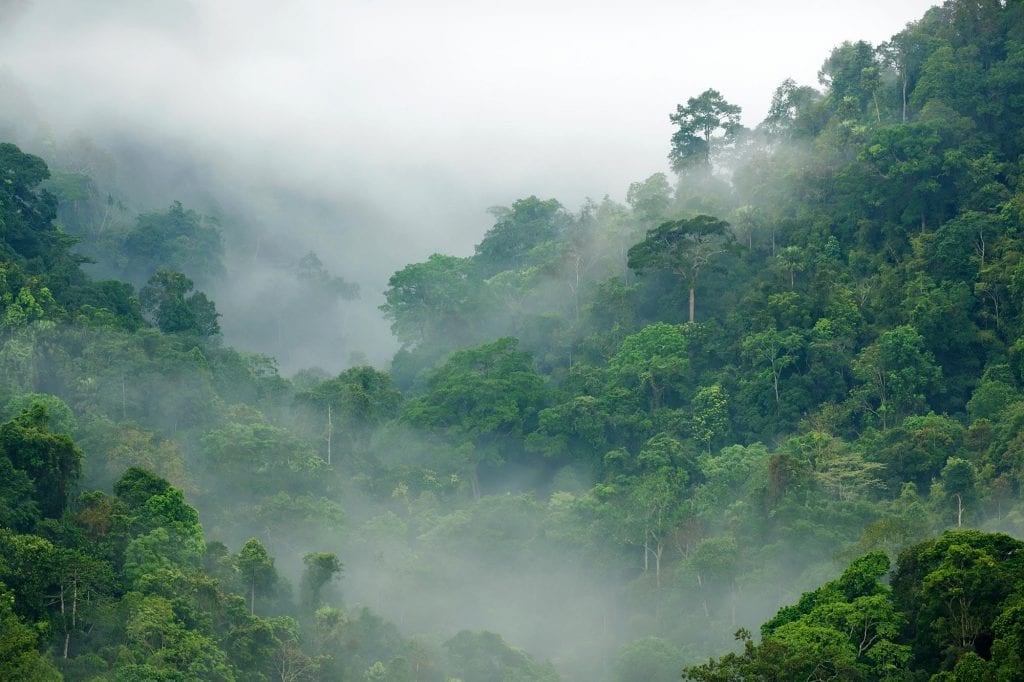
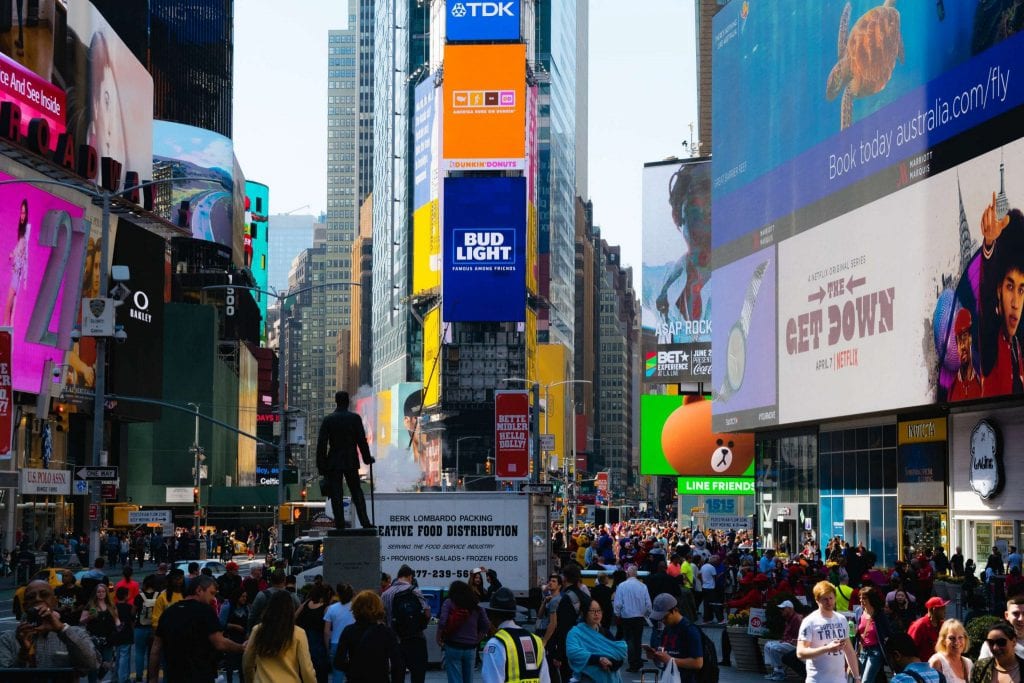
Cities, like forests, are predicated on diversity. Cities can learn from the natural structures of complex forest systems.
Ideas for proactive relationships between cities and forests include forest-friendly coffees and plant products that support local forest economies, along with sourcing guidelines for other commodities that may threaten rainforests, like soy, palm oil and beef. Opportunities include educational and tourism programs that connect children from urban and rural areas, investments in watersheds that provide cities a reliable supply of clean water, and pension funds that invest in forest plantations. Added to this list is sustainable timber production, guided by local community leadership. Research and case studies have shown that by combining advanced forest management techniques, transparent monitoring, and deep local knowledge of forests, communities are able to generate income comparable to clearing land for agriculture, while keeping forests intact.
Building cities out of wood
Sustainably harvesting wood to protect forests opens a link to one of the most advanced concepts in urban design and architecture, “wood urbanism”: literally building our cities with wood – from pot scrapers to skyscrapers.
Over the past decade the concept of tall wood buildings using “mass timber” frames and cross-laminated timber (CLT) panels has developed with much excitement and investment: a strategy for healthy, fire-safe urban buildings that can help to reverse climate change. The argument is that by replacing our most CO2-intensive building materials (like concrete, steel and aluminum) with a material that naturally sequesters carbon rather than emits it, we can reduce the CO2 entering the atmosphere by as much as 30% annually – an amount equivalent to the world’s entire transportation sector. And this is no fantasy. Wood is currently being used to build hundreds of safe, healthy and beautiful urban buildings at costs competitive with concrete and steel.
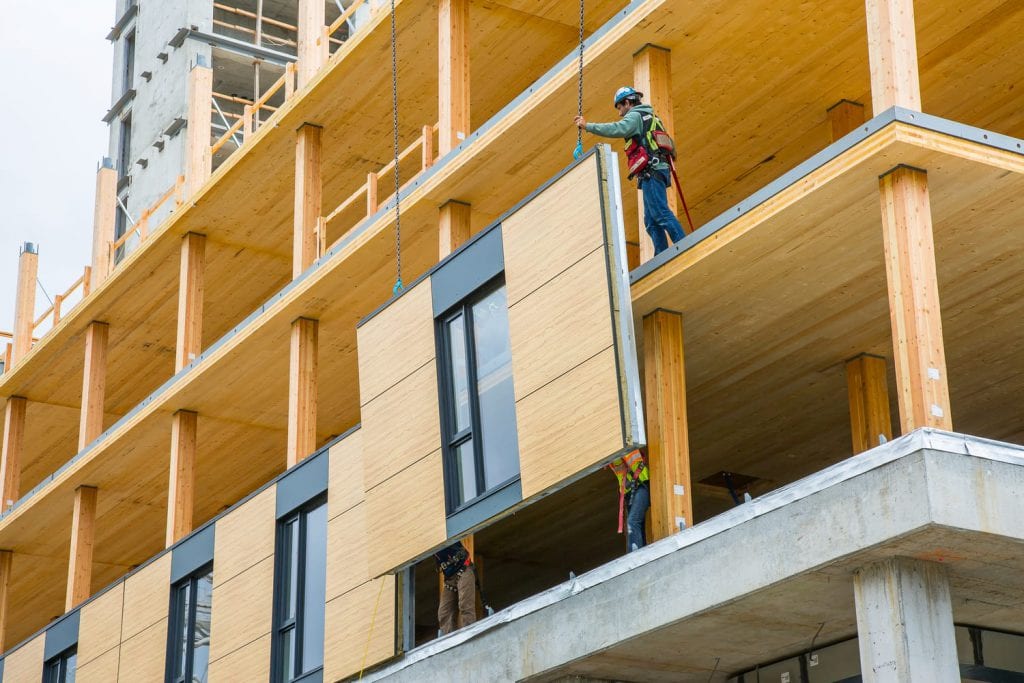
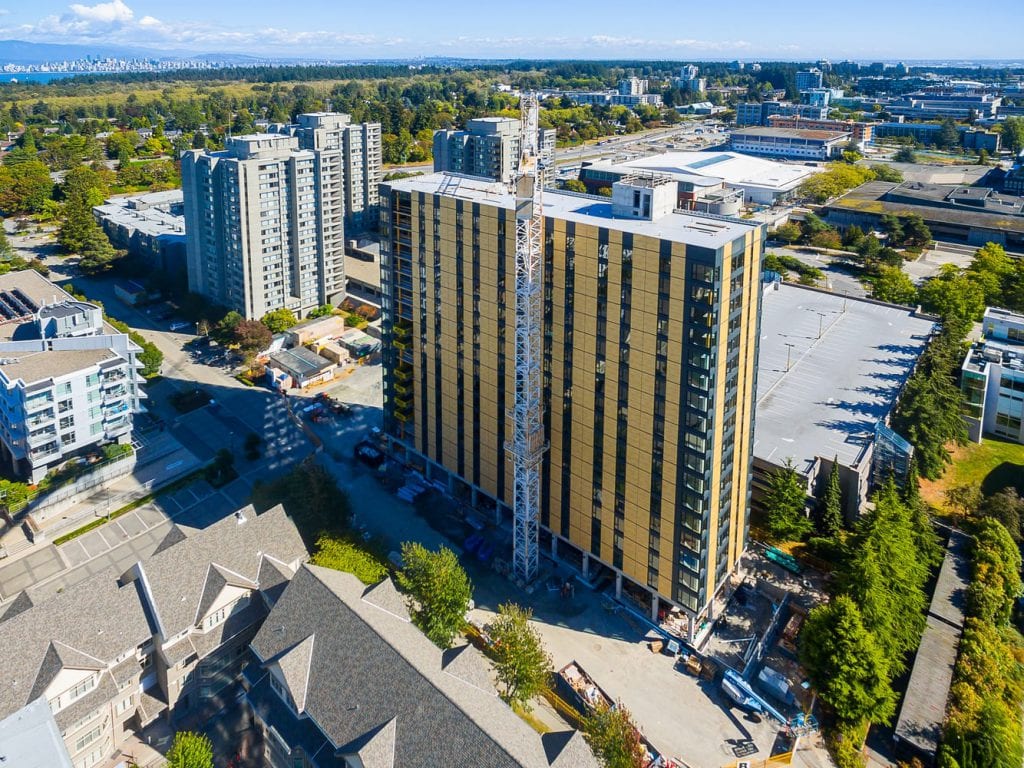
Brock Commons, a composite CLT and concrete building, once the world’s tallest timber building
Brock Commons, an eighteen-story student residence recently completed on the University of British Columbia campus in Vancouver was, until March 2019, the world’s tallest wood building. To win the contract, architects and engineers had to compete with conventional construction materials, and won the bid based on price and performance by a slim margin. Future-focused developers see additional advantages on the horizon as carbon pricing is implemented and fossil fuel costs escalate.
Don’t forget the forest
With plenty of evidence that healthy, carbon-sequestering wood buildings are possible, desirable and affordable, the question about their impact on the world’s forests has yet to be fully answered. On the quantitative “supply-side”, research by Dr. Chad Oliver at Yale University’s School of Forestry shows that global forests already generate more than enough wood to build 50% of all urban construction – production levels that can be sustained indefinitely with good forest management and investment in supply chain systems. But even this assurance does not necessarily get us to an “interdependent and intimate” relationship between cities and forests.
The greater challenge is to link the charisma and ‘in-your-face’ solidity of big wood buildings to their forests of origin, a mental and emotional connection that validates the perpetual function and purpose of forests as social and natural systems. Establishing this link is key to reversing the underlying drivers of deforestation, which begin with a perceived lack of value of forests. This undervaluing is due in large part to how urbanization pushes forests into the cognitive distance, and global capitalism sees forests as “inefficient” in terms of quick return on investment. When urbanization and global capitalism get together, we get our perfect storm of global deforestation: 43,000 Ha lost per day. The good news is that to the degree cities currently foster distance and ambivalence towards the natural environment, deforestation is also a problem that cities can reverse if they become intentional about it.
Cities are the great global consumers by sheer volume, eating up 75% of global resources. And they are also where the vast majority of consumer tastes, ideas and systems are invented, tested and formed. When designers in Paris, New York, Shanghai or Lagos decide it’s time again to wear bell bottoms or high-waisted pants, the world will follow. The same applies to other commodities like food, technology, transport and housing. If it is ‘cool’ to live in an industrial loft today it is because of the urban taste-making machine of the 1990s. If it is cool to live in a wood loft by 2020, we can credit the same. And a loft building made of wood sourced from a partner forest managed by a local community? Engaging the world of science, industry, urban policy, and forest communities in this level of systemic transformation may give us a more interesting story than the return of bell bottoms.
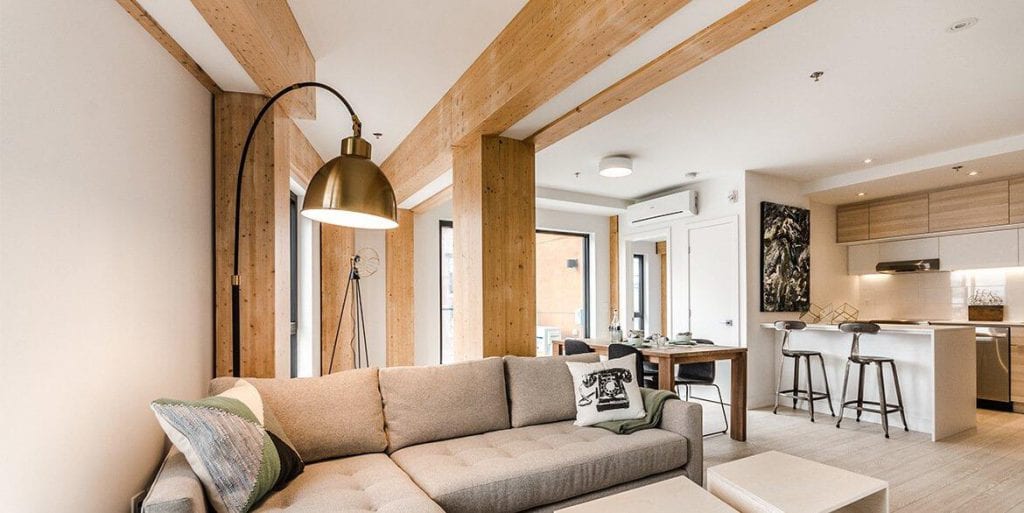
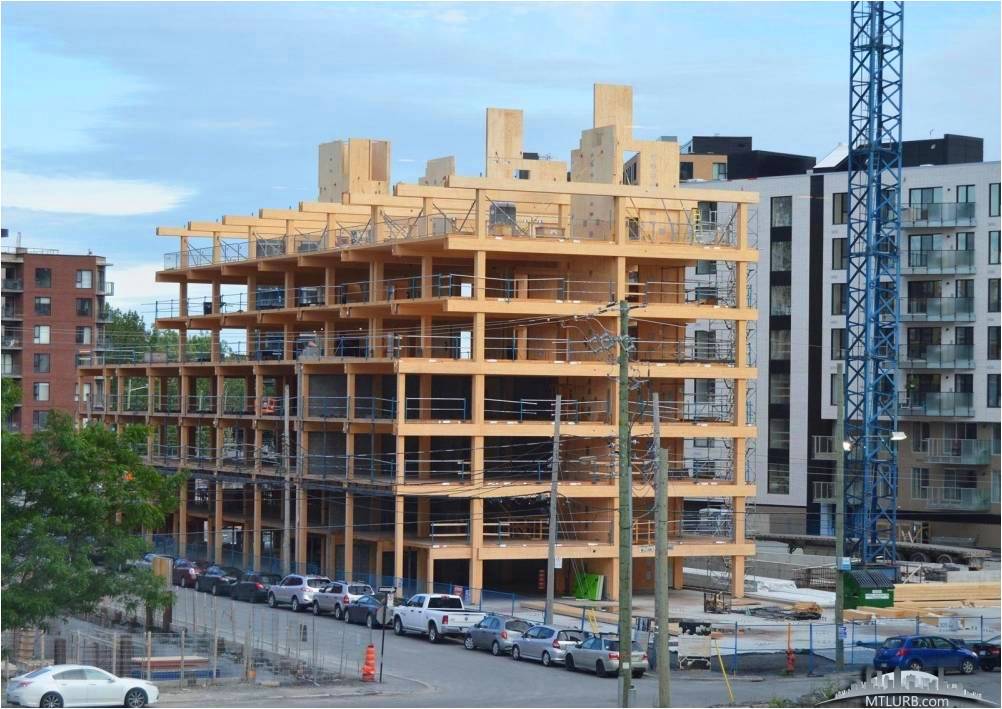
The Arbora mixed-use loft development in Montreal is an example of urban lifestyle marketing of mass timber buildings in an urban context
The quality and content of these stories is critical. We can’t save the world’s forests simply by cutting down trees to make buildings. It is important to acknowledge that some forests ought never to see a chainsaw because of their special ecological and social contribution or history. We must be selective about which forests are suitable to produce wood sustainably, and always define this from within the particular forest context. To do this we will have to get more comfortable with the chainsaw as a surgical tool that, in careful hands, can help forests live a long and productive coexistence.
The community of Uaxactun, Guatemala have demonstrated how effective this strategy can be in a rainforest context. After twenty years of active forest management they have maintained and increased intact forest cover, compared the “protected areas” around them that are often ravaged by poachers, drug runners, fires and opportunistic cattle grazing. And they have done this while supporting the community with a range of forest products including many species of certified sustainable wood. Recently this wood was used to reconstruct part of the famous Coney Island Boardwalk in New York City that was ravaged by Hurricane Sandy. Tourists can now make the connection between a faraway forest that they’ve helped conserve to slow climate change, and the dangerous impacts of “business as usual,” all right under their feet.
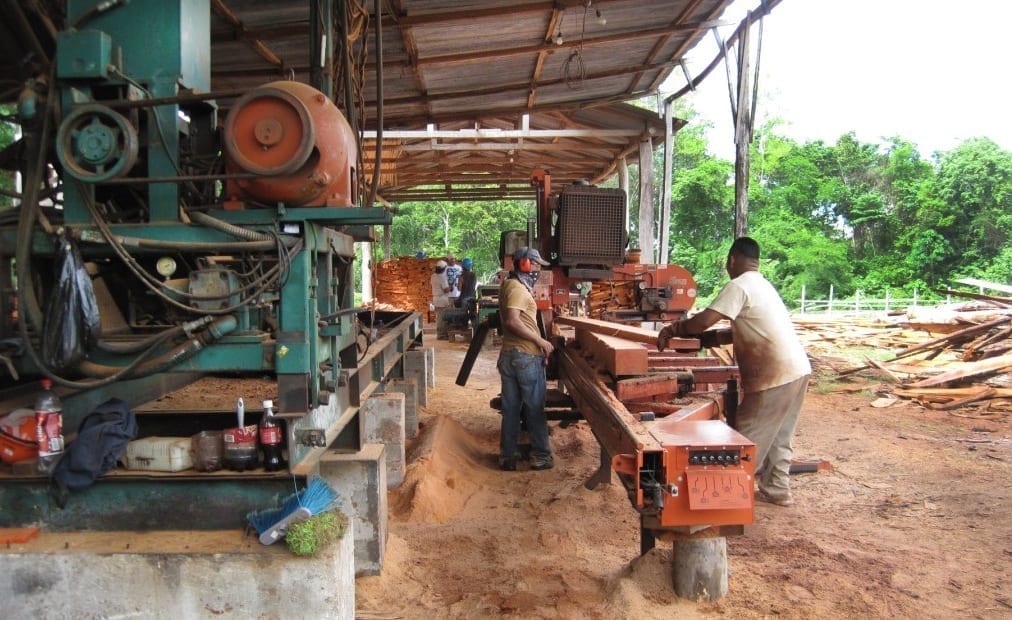
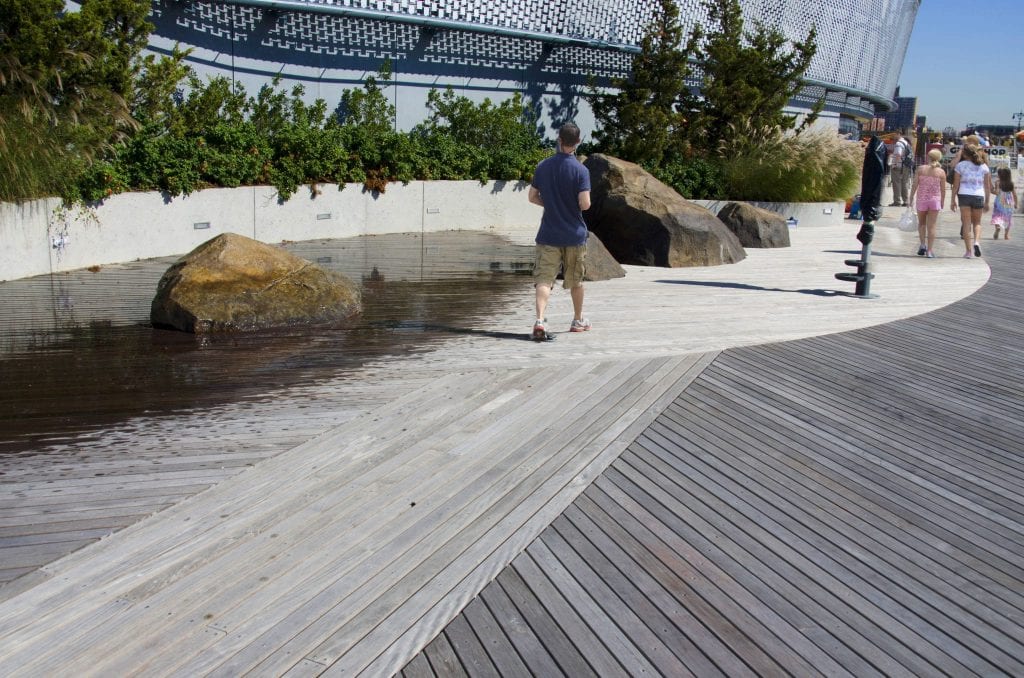
Wood sustainably harvested in Uaxactun, Guatemala used to rebuild a section of the Coney Island Boardwalk in NYC
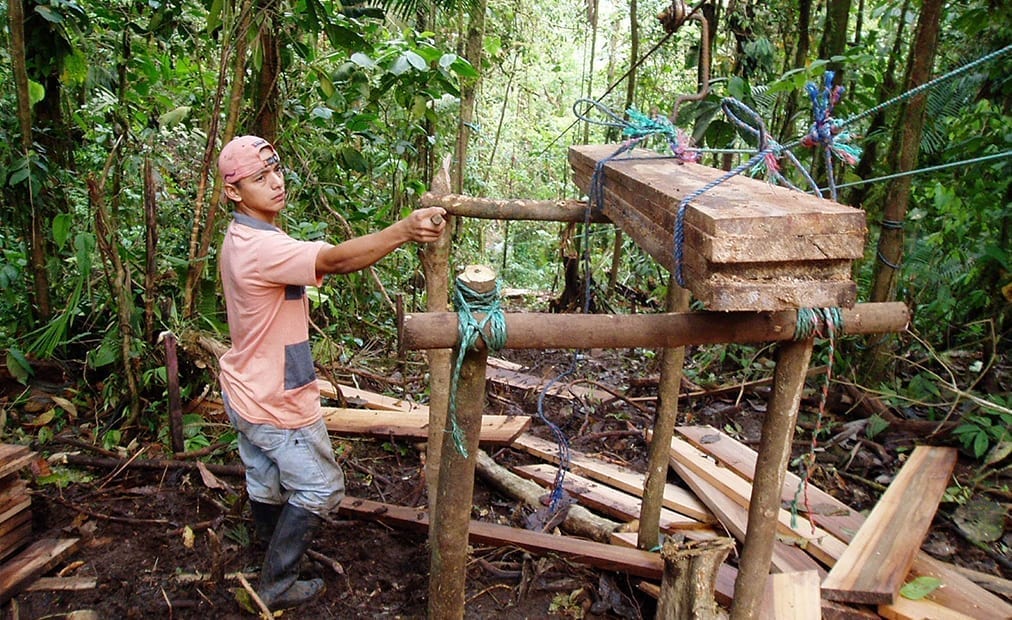

Whole Forest’s low-impact extraction techniques; finished products showcase many species of the forest.
Things get most interesting when this kind of selectively harvested wood used in city infrastructure can become a “souvenir”, part of a larger romance with forests that helps change the culture, knowledge and values regarding forests’ importance. The visible presence of wood in the city, can be “branded” and hitched to the ideas, value and location of a perpetual forest, akin to a marketing agency promoting a new product by associating with a celebrity’s face or lifestyle. Wood used this way is more than a carbon sink. It becomes a symbol, a vehicle for communicating, caring and acting on behalf of forests. In this brave new “wood-world” the question: “where did your building grow?” will generate conversation and pride, a chapter in a bigger narrative of rural and urban interdependence, where the many characters, people, plants and animals from around the world all have a role and a voice in sustaining urban life.
Scaling up, and down: from bridges to breadboards
Buildings are big. They deal with a huge volume of carbon, either as emitters or as sequesterers, and the wood used to make them is mostly sourced from northern coniferous forests in Canada, Europe and the United States. To unlock the full potential of the wood/city/forest value proposition, city planners, policy makers and consumers will need to embrace the diverse ecosystem of infrastructures that can be made using wood, from urban-scale bridges to boardwalks, benches, boats, bicycles and breadboards.
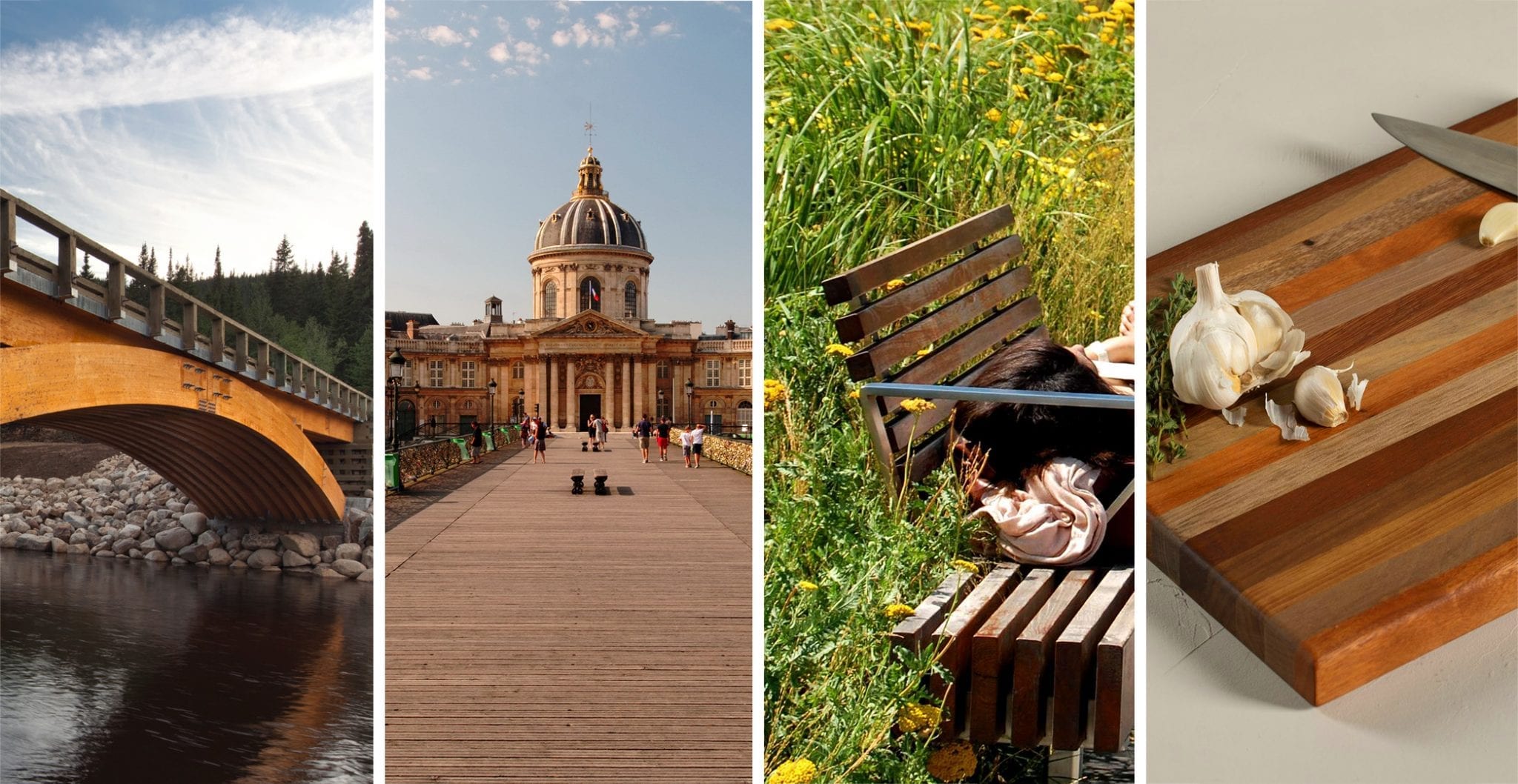
Each of these “parts of a city” is an opportunity to avoid using a high CO2 emitting material like plastic, aluminum or steel, and for a new forest-positive story to be written. And the variety of wood needed for these infrastructures (hard, soft, heavy, light, durable, flexible etc.) means the wood can be sourced from more diverse forests and communities around the world, including tropical forests. If this sourcing is done right – transparent, legal and part of a certified perpetual forest plan – it can capture the imagination of city dwellers while directing funds and further interest towards good forest stewardship in the coming decade.
Building with diversity
Over the past 17 years, Peter Pinchot – founder of EcoMadera – has worked closely with community members in the threatened tropical forests of Ecuador. Their goal has been to ensure the forest avoids destruction, and pays for itself through sustainably-sourced wood products offered to the global market. After years of testing, setbacks, and innovation, their co-owned Whole Forest company now supplies unique wood products like countertops, flooring, tables and cutting boards that showcase the many species found in these forests. This multidimensional partnership protects vast areas of tropical forest by combining ultra low-impact extraction, local employment (that depends on healthy forests) and a market willing to pay for a quality product branded with a meaningful narrative. Recently, Whole Forest has been able to offer carbon offsets with solid evidence that their products actually save forests from degradation and destruction.
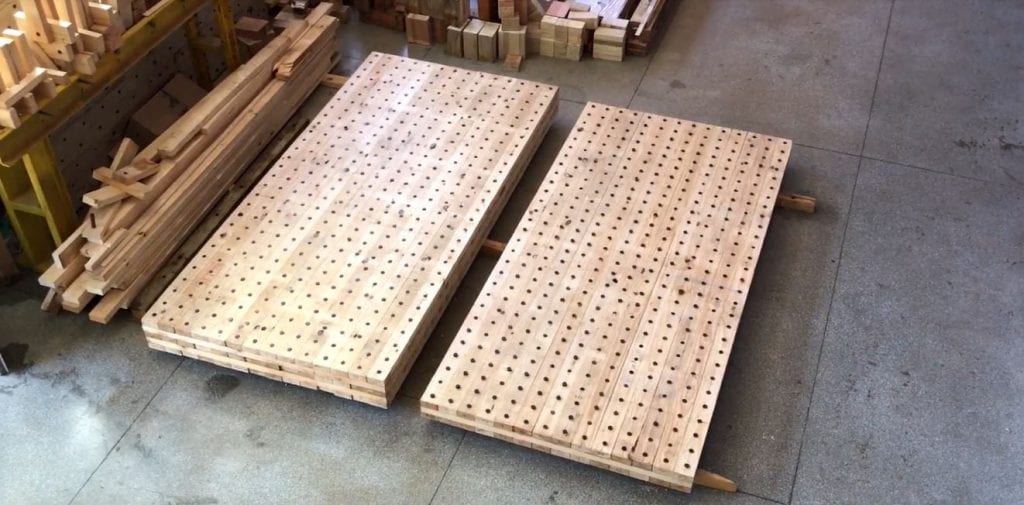
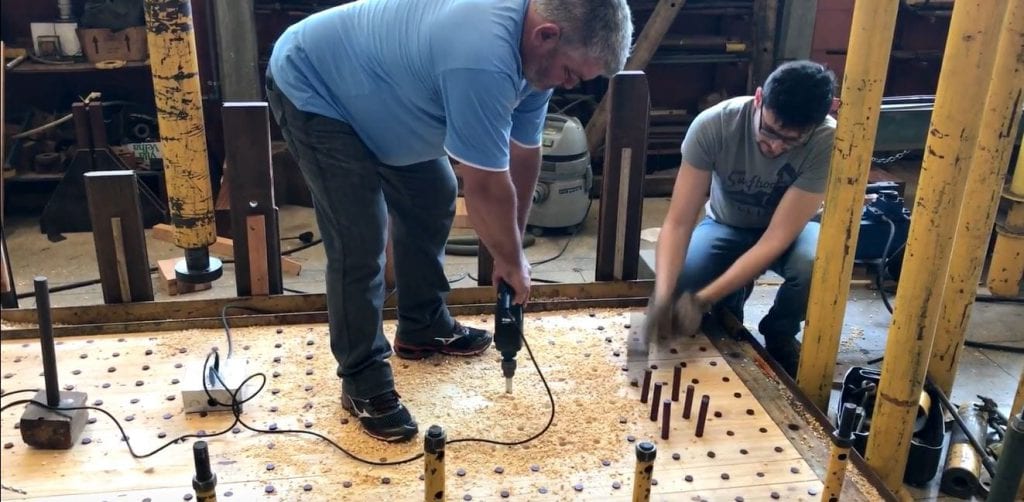
Dowelled cross-laminated timber (DCLT) using tropical hardwood pegs instead of glue to connect the layers
This model, while challenging, can be replicated and scaled-up to the global demand for wood products in our cities. A 2018 LaMEME study of dowelled cross-laminated timber (DCLT) panels – a low carbon alternative to glue laminated wood products – proposes ways to combine the use of softwood and tropical hardwoods in construction materials. Imagine a 25-story building made entirely from different wood species, sourced from forests that each maintained a balance of consumption, and regeneration, economic prosperity and cultural vitality. With thoughtful urban policies to increase transparency and demand for these forest products, the benefits can be distributed all the way back to small landholders, indigenous peoples, and workers at all levels in the supply chain, generating good employment and improving livelihoods. These are the people at the front-lines of deforestation or conservation, and they are often marginalized observers of urbanization with options limited to moving to the cities themselves, or continued liquidation of forests for subsistence. By involving them in an exciting global vision that connects urban innovation, good forest management and well paid, hands-on work in the forest, these people can become genuine partners in the city-forest alliance.
Can cities help rewrite the global story?
Building our cities with wood to fight climate change and improve the built environment is a beautiful and realistic vision that can shift the attention of governments and culture towards the life-giving importance and romance of the world’s forests. Thriving and restored forests are one of the mightiest chess pieces in decarbonizing our atmosphere and protecting biodiversity.
To leverage the wood-city-forest nexus to solve climate change, we will need creative urban policies and projects that favour sustainable wood, assisted by market regulation, and culture. We will need cultural leaders in cities (designers, engineers, artists, writers) to catch the vision and show us how compelling wood can be. We will need city agencies to create novel partnerships with real places and people where forests are managed transparently and sustainably. And we will need urban consumers (individuals, organizations and governments) that recognize and are willing to pay for forest products that support the many stakeholders in the value chain stretching back and forth between the forest and the city.
Ultimately, forests and wood offer a triple advantage to climate change. First, the act of not converting a forest to farmland or pasture prevents massive amounts of CO2 from entering the atmosphere. Second, planting trees and restoring forests – two important but sometimes very different things – can suck enormous amounts of CO2 from the atmosphere. And third, using wood in long-term infrastructure locks in the CO2 pulled from the atmosphere, while allowing new trees to grow in the forest to continue the cycle. Even reducing global deforestation by half, and using wood for 50% of global construction would stop 13 billion tons of CO2 going into the atmosphere every year (more than 35% of total emissions) bringing us much closer to the urgent 2 degree mandate of the 2015 Paris Agreement.
Forests and cities share several intrinsic characteristics that can accelerate the virtuous cycle :
- Wood is beautiful and charismatic: an inspiration for nature-based solutions in design and architecture.
- Cities, like forests, are predicated on diversity. Cities can learn from, and pay homage to, the natural structures of complex forest systems with supportive consumption.
- The requirements of thriving cities and forests are parallel experiments that are interdependent, informing and regulating one another. Urban design is increasingly ecological design.
- New social and technical forestry innovations, are expanding our ability to extract wood with less harm to the forest systems.
- Biophilia is a growing science and design trend: People are looking for natural solutions in design and architecture. Wood provides a significant set of biophilic solutions, that are beautiful and practical.